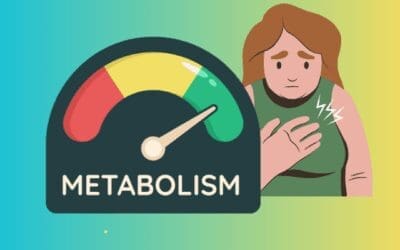In today’s age of health and wellness, intermittent fasting has emerged as a popular approach for weight management and improved overall well-being. It offers a flexible and effective way to optimise health, particularly for individuals over the age of 40. This comprehensive guide aims to delve into the world of intermittent fasting, explore its benefits for people in this age group, provide practical tips for getting started, and address common questions and concerns. By the end of this article, you’ll have a solid understanding of intermittent fasting and how it can positively impact your health and lifestyle.
Understanding Intermittent Fasting
What is Intermittent Fasting?
Intermittent fasting is a dietary pattern that involves cycling between periods of fasting and eating. It doesn’t focus on what you eat but rather when you eat. There are different methods of intermittent fasting, such as the 16/8 method, where you fast for 16 hours and have an 8-hour eating window. The 5:2 diet involves eating normally for 5 days and restricting calorie intake for 2 non-consecutive days.
How Does Intermittent Fasting Work?
Intermittent fasting triggers several physiological changes in the body. During fasting periods, the body depletes its glycogen stores and starts breaking down stored fat for energy. This leads to fat loss and improved metabolic health. Additionally, fasting enhances autophagy, a cellular recycling process that removes damaged components and promotes cellular rejuvenation.

Benefits of Intermittent Fasting for People Over 40
Weight Management and Fat Loss
Intermittent fasting can be highly effective for weight management in individuals over 40. Research suggests that intermittent fasting helps reduce body fat while preserving muscle mass. It also enhances metabolic rate, allowing the body to burn calories more efficiently. A review on intermittent fasting and metabolic health published in Nutrients found that intermittent fasting resulted in significant weight loss and improvements in body composition1.
Brain Health and Cognitive Function
Intermittent fasting has been linked to improved brain health and cognitive function. Brain-derived neurotrophic factor (BDNF), a protein that supports the growth and function of neurons, is essential for learning, memory, and overall cognitive function. Ageing-related loss of BDNF has been linked to an increased risk of Alzheimer’s disease. Intermittent fasting has shown to increase BDNF level and improve cognitive performance2.
Downsides of Intermittent Fasting for People Over 40
While intermittent fasting offers numerous benefits, it’s important to be aware of potential downsides, especially for individuals over the age of 40. Here are some considerations to keep in mind:
Nutrient Deficiencies
Extended fasting periods may increase the risk of nutrient deficiencies, particularly if your overall diet lacks essential nutrients. A study published in the journal Nutrients found that prolonged fasting can lead to inadequate intake of certain vitamins and minerals, such as folate, vitamin D and vitamin B123-5. It’s crucial to ensure a well-balanced diet during non-fasting periods to meet your nutritional needs.
Adherence Challenges
Intermittent fasting may pose adherence challenges for some individuals, especially those with busy schedules or specific dietary requirements. It requires discipline and careful planning to adhere to fasting windows and make appropriate food choices during eating periods. It’s important to find an intermittent fasting method that fits your lifestyle and preferences to increase long-term adherence.
Potential Negative Impact on Hormones
While intermittent fasting can help restore hormonal balance in some cases, it may not be suitable for everyone. Prolonged or excessive fasting can potentially disrupt hormone levels, leading to adverse effects. A study published in the Journal of Clinical Endocrinology & Metabolism found that fasting for more extended periods can increase cortisol levels, which may have negative implications for metabolic health6. Consulting with a healthcare professional is crucial, particularly if you have hormonal imbalances or specific health conditions.
Risk of Disordered Eating Patterns
Intermittent fasting may trigger disordered eating patterns or unhealthy relationships with food in susceptible individuals. It’s essential to approach intermittent fasting with a healthy mindset and avoid using it as an excuse for extreme restriction or binge eating behaviours. If you have a history of disordered eating or are prone to these behaviours, it’s advisable to seek guidance from a healthcare professional or registered dietitian.

Is Intermittent Fasting Different for Men and Women?
Intermittent fasting may affect men and women differently due to hormonal variations and metabolic differences. Here are some key considerations regarding the gender-specific aspects of intermittent fasting:
Hormonal Variations
Hormonal differences between men and women can influence the response to intermittent fasting. Women experience monthly hormonal fluctuations, particularly during the menstrual cycle. Two key hormones involved in women’s health are oestrogen and progesterone.
Oestrogen and progesterone play important roles in regulating various physiological processes, including metabolism, energy expenditure, and insulin sensitivity. These hormones fluctuate throughout the menstrual cycle, and these fluctuations can influence how women’s bodies respond to fasting.
A study published in Fertility and Sterility investigated the effects of fasting on glucose metabolism in women across different phases of the menstrual cycle7. The researchers found that fasting affected women’s glucose metabolism differently depending on the menstrual phase. During the early follicular phase (days 1-5), when oestrogen and progesterone levels are relatively low, fasting was associated with decreased glucose tolerance and insulin sensitivity compared to the late follicular phase (days 10-13), when oestrogen and progesterone levels are higher. These findings suggest that both oestrogen and progesterone fluctuations may influence how women’s bodies respond to fasting.
In addition to oestrogen, progesterone also plays a significant role in women’s health. During the luteal phase (days 15-28) of the menstrual cycle, progesterone levels rise. Progesterone can affect appetite, thermogenesis, and the body’s response to insulin. These hormonal changes may impact hunger cues and energy levels during fasting.
Understanding the hormonal variations during the menstrual cycle can help women tailor their fasting approach accordingly. Women may find that their energy levels, hunger cues, and overall well-being fluctuate throughout different phases of the cycle. Adjusting the fasting protocol and meal timing based on these fluctuations can help optimise the fasting experience and support overall hormonal balance.
It’s important to note that individual responses may vary, and not all women will experience significant changes in glucose metabolism or appetite during different menstrual phases. However, being mindful of these potential hormonal influences can help women make informed decisions about their fasting protocol and listen to their body’s unique needs.
Impact on Reproductive
Health Intermittent fasting may have implications for reproductive health, especially in women. Prolonged fasting or extreme caloric restriction can disrupt hormonal balance and menstrual regularity. Studies have highlighted the potential negative effects of intermittent fasting on women’s reproductive health and fertility. Women who are trying to conceive or have specific reproductive concerns should consult with a healthcare professional before implementing intermittent fasting.
Energy and Nutrient Requirements
Intermittent fasting can have different effects on nutrient requirements for men and women. While the basic principles of balanced nutrition still apply, there are some variations to consider due to physiological and hormonal differences between the genders.
One notable difference is the variation in daily caloric needs. Men generally have higher muscle mass and metabolic rates compared to women, which means they typically require more calories to support their energy needs. As a result, men may need to adjust their caloric intake during intermittent fasting to ensure they meet their energy requirements.
In terms of macronutrients, both men and women need adequate amounts of carbohydrates, protein, and fats. However, the specific proportions may vary. For example, men may require slightly higher protein intake to support muscle growth and maintenance, while women may benefit from slightly higher fat intake to support hormonal balance.
Micronutrient requirements can also vary between men and women. For instance, women have higher iron requirements due to menstrual blood loss. Ensuring an adequate intake of iron-rich foods such as lean meats, legumes, and dark leafy greens becomes crucial for women practising intermittent fasting.
Calcium is another nutrient of concern, particularly for women, as they have a higher risk of osteoporosis. Including calcium-rich foods such as dairy products, fortified plant-based alternatives, and leafy greens can help meet the recommended daily intake.
Vitamin D, essential for bone health and immune function, is another nutrient that may require attention, especially for individuals who spend limited time outdoors. Dietary sources of vitamin D include fatty fish, fortified dairy products, and exposure to sunlight. However, supplementation may be necessary, particularly for individuals with limited sun exposure.
It’s important to note that these are general guidelines, and individual nutrient requirements may vary based on factors such as age, activity level, overall health, and specific dietary needs. Consulting with a healthcare professional or a registered dietitian can provide personalised recommendations to meet nutrient requirements during intermittent fasting.
While intermittent fasting can be beneficial for both genders, it’s important to tailor the fasting and eating windows to meet individual needs. A study published in the Journal of the International Society of Sports Nutrition emphasised the importance of individualising intermittent fasting protocols based on sex, body composition, and activity levels to optimise results8.
Muscle Mass and Strength
Maintaining muscle mass and strength is crucial, particularly as we age. Both men and women can experience muscle loss with prolonged fasting or inadequate protein intake. Resistance training and adequate protein consumption is important during intermittent fasting to preserve muscle mass. Including resistance exercises and ensuring sufficient protein intake can help mitigate muscle loss concerns for both men and women.
Importance of Muscle Mass
Maintaining and preserving muscle mass is important for both men and women, albeit for slightly different reasons. Let’s explore the significance of muscle mass for each gender:
Muscle Mass in Men
For men, muscle mass is often associated with strength, athletic performance, and overall physical fitness. Having a higher muscle-to-fat ratio can contribute to improved body composition, enhanced metabolism, and better functional abilities.
Muscle mass plays a crucial role in supporting men’s physical performance and activities. It provides the necessary strength, power, and endurance required for various physical tasks, such as lifting heavy objects, engaging in sports, or participating in recreational activities.
Additionally, muscle tissue is metabolically active, meaning it burns more calories at rest compared to fat tissue. This higher resting metabolic rate can support men in maintaining a healthy weight and potentially aid in weight loss efforts.
Moreover, adequate muscle mass has been linked to several health benefits for men. It is associated with better insulin sensitivity, which can help regulate blood sugar levels and reduce the risk of developing type 2 diabetes. Furthermore, maintaining muscle mass can support bone health and reduce the risk of osteoporosis.
Muscle Mass in Women
For women, muscle mass is equally important, although the focus may differ from that of men. Contrary to common misconceptions, women can benefit greatly from building and preserving muscle mass without the fear of developing a bulky appearance.
One crucial reason for women to prioritise muscle mass is its role in maintaining a healthy metabolism. As mentioned earlier, muscle tissue burns more calories at rest compared to fat tissue. This means that women with higher muscle mass have an advantage in maintaining a healthy weight and managing body composition.
Furthermore, muscle mass can contribute to improved body shape, as it provides a toned and sculpted appearance. Building lean muscle can enhance women’s overall physique, boost self-confidence, and promote positive body image.
Another key reason for women to focus on muscle mass is its impact on bone health. Women are more prone to developing osteoporosis, a condition characterised by weakened and brittle bones. Resistance training and promoting muscle development through activities like weightlifting can help increase bone density, reduce the risk of fractures, and support long-term bone health.
It’s important to note that building muscle mass takes time and consistent effort. Engaging in regular resistance training exercises, such as lifting weights or bodyweight exercises, along with proper nutrition, is crucial for both men and women to achieve their desired muscle mass goals.

Getting Started with Intermittent Fasting
Consult with a Healthcare Professional
Before starting any dietary changes, it’s important to consult with a healthcare professional, especially if you have any underlying health conditions or are taking medications.
Choose the Right Intermittent Fasting Method
Select an intermittent fasting method that suits your lifestyle and preferences. Popular options include the 16/8 method, 5:2 diet, and alternate-day fasting. Experiment with different approaches to find the one that works best for you.
Start Slow and Gradually Increase Fasting Duration
If you’re new to intermittent fasting, start by gradually increasing the fasting duration. Begin with a 12-hour fasting window and gradually extend it over time. This allows your body to adapt and helps minimise potential discomfort.
Stay Hydrated and Optimise Nutrition
During fasting periods, it’s essential to stay hydrated. Drink plenty of water, herbal teas, and other non-caloric beverages. When you break your fast, focus on consuming nutrient-dense foods that support overall health.
FAQs (Frequently Asked Questions)
Q1: Can I drink coffee or tea during fasting periods?
A: Yes, you can consume non-caloric beverages such as black coffee, unsweetened tea, and water during fasting periods. However, avoid adding sugar, cream, or any other additives that may break your fast.
Q2: Is intermittent fasting safe for people with diabetes?
A: Intermittent fasting can be safe for individuals with diabetes, but it’s crucial to work closely with a healthcare professional to monitor blood sugar levels and adjust medications if needed.
Q3: Can I exercise while fasting?
A: Yes, moderate exercise during fasting periods is generally safe and can even enhance the benefits of intermittent fasting. However, listen to your body and adjust your exercise routine accordingly.
Q4: Can intermittent fasting help lower cholesterol?
A: There is some evidence that it may help lower cholesterol levels. A study9 published in the journal “Frontiers in Nutrition” found that people who followed an intermittent fasting diet for 12 weeks had significant reductions in total cholesterol, LDL (bad) cholesterol, and triglycerides, compared to a control group who did not follow an IF diet. The IF group also had improvements in insulin sensitivity, a risk factor for heart disease.
Q5: Can I do intermittent fasting indefinitely?
A: As there are too many factors to take into account here, it is always best practice to consult your healthcare professional to ensure that your body can adapt to IF long term.
Citations:
- Vasim I, Majeed CN, DeBoer MD (2022). Intermittent Fasting and Metabolic Health. Nutrients, 14(3):631. doi: 10.3390/nu14030631.
- Seidler K, Barrow M (2022). Intermittent fasting and cognitive performance – Targeting BDNF as potential strategy to optimise brain health. Frontiers in Neuroendocrinology, 65, 100971.
- Aksungar FB, Topkaya AE, Akyildiz M. Interleukin-6, C-reactive protein and biochemical parameters during prolonged intermittent fasting (2007). Ann Nutr Metab, 51(1):88-95. doi: 10.1159/000100954.
- Żychowska M, Rola R, Borkowska A, Tomczyk M, Kortas J, Anczykowska K, Pilis K, Kowalski K, Pilch W, Antosiewicz J (2021). Fasting and Exercise Induce Changes in Serum Vitamin D Metabolites in Healthy Men. Nutrients, 13(6):1963. doi: 10.3390/nu13061963.
- Harper S.M., Drenick E.J., Swendseid M.E (1970). Folic acid and vitamin B 12 nutriture in obese men during prolonged fasting and refeeding. Am. J. Clin. Nutr, 23:4–7. doi: 10.1093/ajcn/23.1.4.
- Bergendahl M, Vance ML, Iranmanesh A, Thorner MO, Veldhuis JD (1996). Fasting as a metabolic stress paradigm selectively amplifies cortisol secretory burst mass and delays the time of maximal nyctohemeral cortisol concentrations in healthy men. J Clin Endocrinol Metab, 81:692–9.
- Diamond MP, Simonson DC, DeFronzo RA. Menstrual cyclicity has a profound effect on glucose homeostasis (1989). Fertil Steril, 52(2):204-8. PMID: 2666174.
- Batitucci G, Junior EVF, Nogueira JE, Brandao CFC, Abud GF, Ortiz GU, Marchini JS, Freitas EC (2022). Impact of Intermittent Fasting Combined With High-Intensity Interval Training on Body Composition, Metabolic Biomarkers, and Physical Fitness in Women With Obesity. Frontiers in Nutrition. DOI=10.3389/fnut.2022.884305
- Ahmed N, Farooq J, Siddiqi HS, Meo SA, Kulsoom B, Laghari AH, Jamshed H, Pasha F (2021). Effects of Intermittent Fasting on Lipid Profile–A Quasi-Randomized Clinical Trial. Frontiers in Nutrition.






